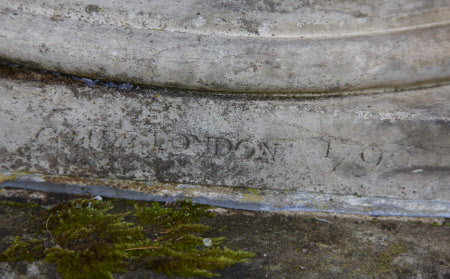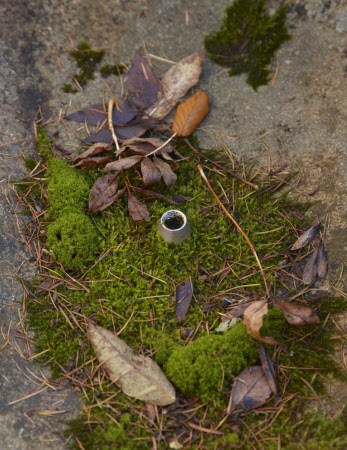Garden vases
Coade
Category
Ceramics
Date
1790
Materials
Coade stone on a sandstone plinth
Measurements
920 x 762 x 1150 mm
Place of origin
Lambeth
Order this imageCollection
Ardress House, County Armagh
NT 247727
Caption
Eleanor Coade developed Coade stone, an innovative artificial stone made from a highly durable type of ceramic that was perfect for outdoor use. Her ornamental sculpture added an enduring beauty to hundreds of gardens and buildings. Coade established her Lambeth manufactory at a time when British industry was dominated by men. In 1769 she took over the premises of an ailing artificial stone factory run by Daniel Pincot, developing the new, closely guarded formula that would bear her name. Pincot continued in the business but was dismissed by Coade a few years later for falsely presenting himself to clients as its proprietor. She made her position abundantly clear in an advert in The Daily Advertiser in September 1771 – ‘no Contracts or Agreements, Purchases or Receipts, will be allowed by her, unless signed or assented to by herself’ – she was indisputably in control of this business. Coade brought in sculptor John Bacon (1740–99) as superintendent and he improved the quality of design, working mostly in the fashionable Neoclassical style. She supplied mould-made architectural ornaments, garden sculpture and monuments to the most eminent architects of the day, including Robert Adam, James and Samuel Wyatt, and John Soane. The caryatids in the gardens at Anglesey Abbey, Cambridgeshire are probably from a group used by Soane in the rebuilding of Buckingham House, London. The company’s 1784 catalogue includes 778 different designs, including one matching an urn (left) now at Ardress House, County Armagh. In 1799 Coade went into partnership with her cousin and the business was renamed Coade & Sealy. A London showroom was opened and the company was granted Royal Appointments by George III and the Prince Regent, who were clients. Coade continued to run her business until her death in 1821, aged 88. Next time you are wandering through a garden and spot what looks like a carved stone urn or figure, perhaps look again – is it what it seems, or has Mrs Coade’s formula tricked you?
Summary
A rare Coadestone (stoneware) garden urn stamped ‘COADE LONDON 1790’. The ceramic material resembles a fine-grained natural stone, which was twice fired, and is famed for its durability. Eleanor Coade's 'Artificial Stone Manufactory' was established at King's Arms Stairs, Narrow Wall, Lambeth, which is now the site of the Royal Festival Hall, in 1769. Eleanor I Coade (1708-96) and her daughter Eleanor II (1733-1821) opened their Lambeth Manufactory for ceramic artificial stone in 1769, and appointed the sculptor John Bacon as manager two years later. They were employed by all the leading architects, especially when The London 1774 Building Act forced the reduction of exterior woodwork to limit fire hazard. Their inexpensive Coadestone keystones, which survive in quatities on upper Harley Street proved to be very lucrative. The firm's engraved designs (produced from about 1777) were published in a 1784 catalogue of over 700 items, entitled “A Descriptive Catalogue of Coade's Artificial Stone Manufactory”. In 1799, she entered into partnership with her cousin, John Sealy, and the firm became Coade and Sealey until his death in 1813. The firm reverted to Coade until her death in 1821. The object has a strong orange colour and has retained excellent fine details. The bowl and socle are elliptical. The socle is simply moulded, the body of the urn has low relief ornamental decoration with fine leaves radiating from the central base of the bowl, grapes and vine leaves are interspersed with ‘drops’ of drapery. There are lions masks at either end of the bowl and a strong ‘torus’ moulding, water leaf are set within a cavetto of the rim with bead decoration to the top edge.
Marks and inscriptions
signed Coadestone 1790
Makers and roles
Coade, manufacturer
References
Conroy, Rachel, Women Artists and Designers at the National Trust, 2025, pp. 72-73



